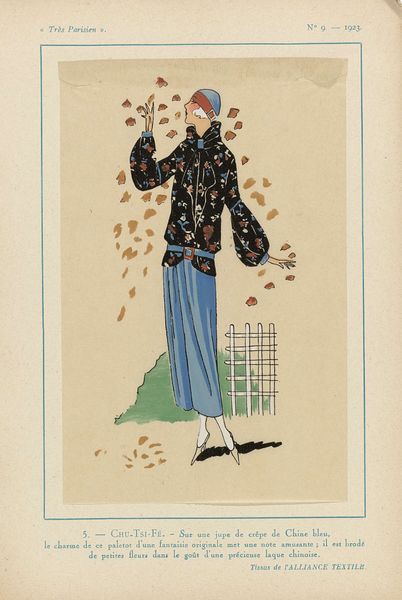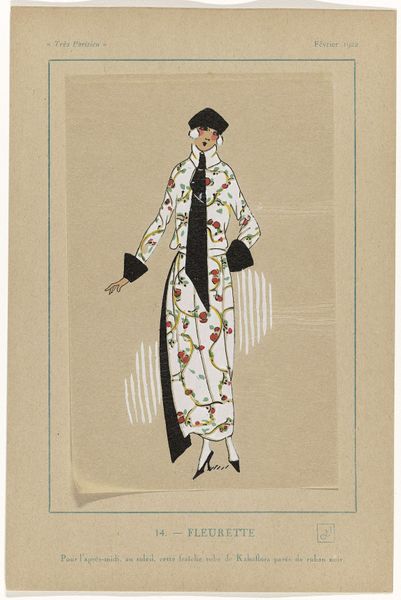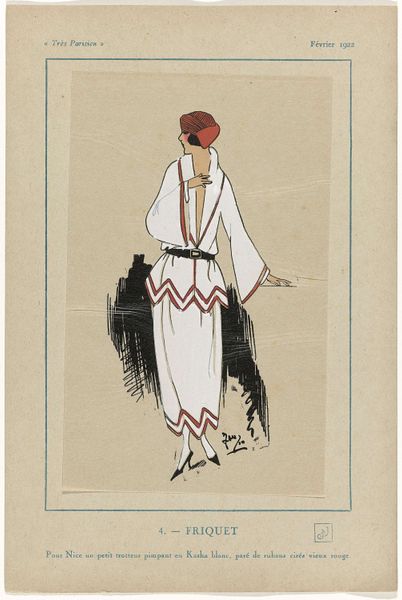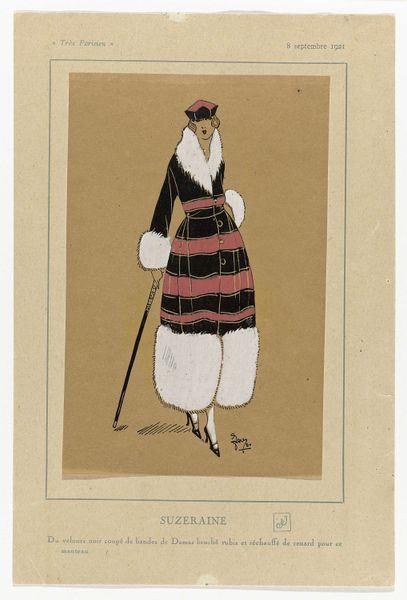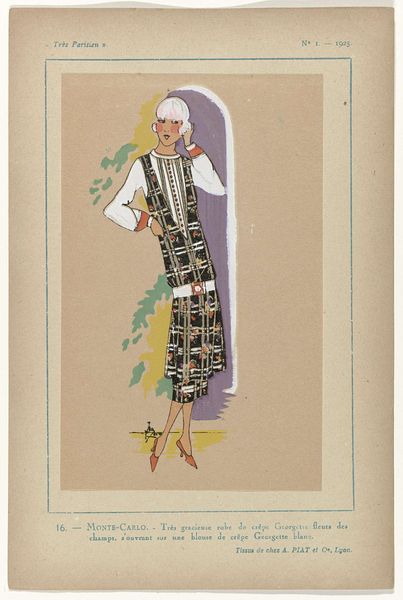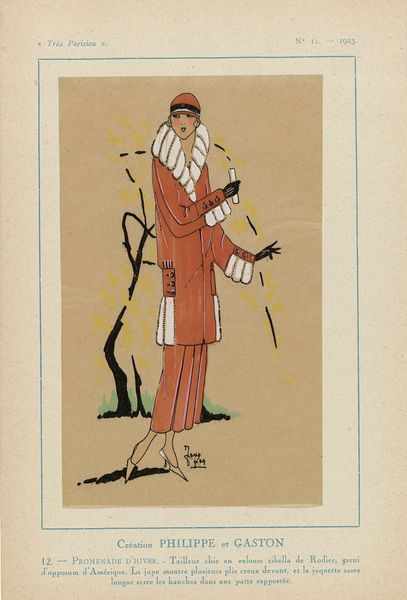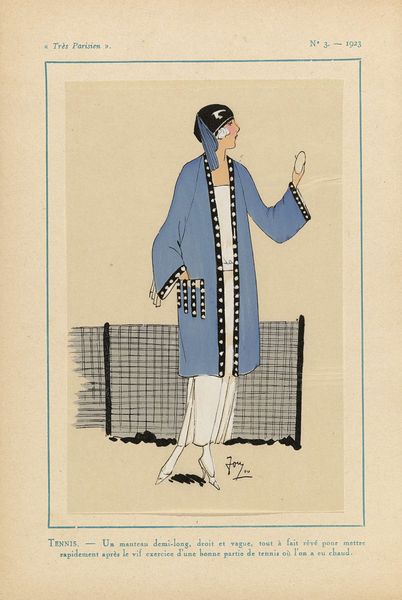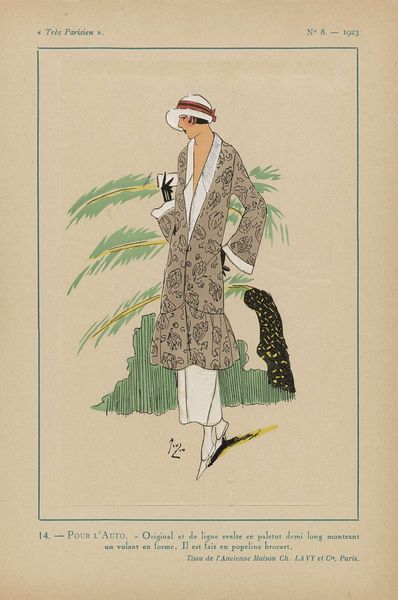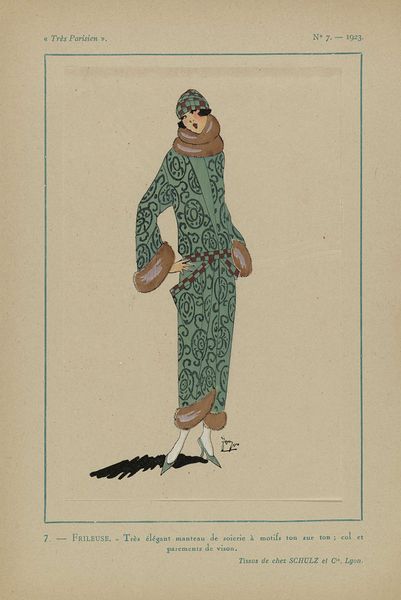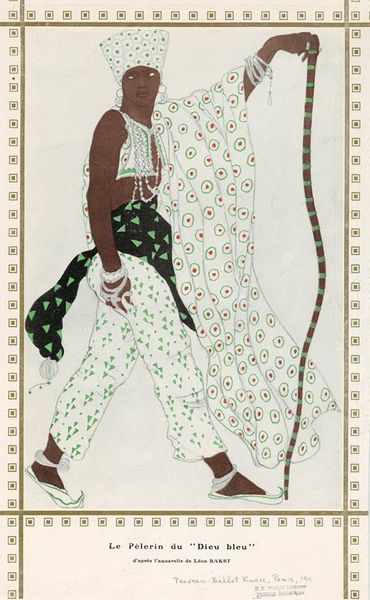
Très Parisien, 1923, No 7: 18.- PLUIE DE FLEURS. / Ce manteau trois/quarts... 1923
0:00
0:00
Dimensions: height 269 mm, width 180 mm
Copyright: Rijks Museum: Open Domain
Curator: Welcome. Here at the Rijksmuseum, we're looking at an intriguing print titled "Trés Parisien, 1923, No 7: 18.- PLUIE DE FLEURS" by an anonymous artist, dating back to 1923. The piece incorporates mixed media, ink, and watercolour illustration, presenting a portrait in the Art Nouveau style. What strikes you initially about this piece? Editor: The first thing I notice is how flat the picture plane is, and how the palette works—mostly muted earth tones, grounded by sharp black accents, like the gloves. Curator: That flattening, a real feature of Art Nouveau, encourages us to read this piece more symbolically. Consider the historical context: post-World War I Paris, a moment of rebirth and a craving for beauty amidst societal change. The artwork encapsulates the fashionable ideal of the "garçonne," the modern woman who was embracing freedom, albeit still draped in luxury. The fur-trimmed coat itself speaks volumes about status and societal expectations, doesn't it? Editor: The garment *is* quite striking—it dominates the composition. The artist’s focus on texture, on the heavy pattern of the fur, works against the flatness you mention. There’s almost a tactile quality to it. The lines of "rain," and the stylized flowers drifting down are lovely; it's decorative but purposeful in echoing the form of the figure. Curator: And let's not forget that Art Nouveau often functioned as a platform to showcase the artistry of textile design itself. “Trés Parisien,” being a fashion plate, perfectly fits into this history, while also showcasing the increased visibility and power, at least in bourgeois culture, that women were experiencing. These were textile designs for a new generation who needed more, felt more. The almost cascading lines lend the piece movement and life. Editor: That movement and texture is right, yes—the illustration's success lies in how all those little flecks work to describe the texture of the heavy material, so opulent in effect, while containing a certain flatness. All elements coexist, activating and completing each other perfectly in the overall harmony of the artwork. Curator: I concur. It also reveals much about how commercial art mirrored, but also informed, evolving gender roles during the roaring twenties. These fashion illustrations are visual manifestos that also sell textiles and fantasies. The coat then embodies both empowerment and consumerism—commodification that’s a part of the fashion. Editor: An encapsulation of tensions; beauty with restraint, commerce with rebellion. Curator: Indeed. Art that reflects and shapes us, even now.
Comments
No comments
Be the first to comment and join the conversation on the ultimate creative platform.
